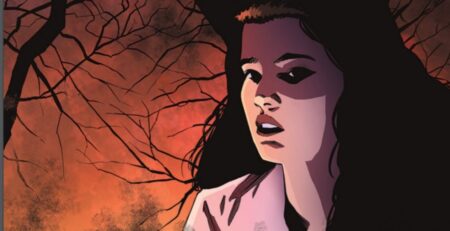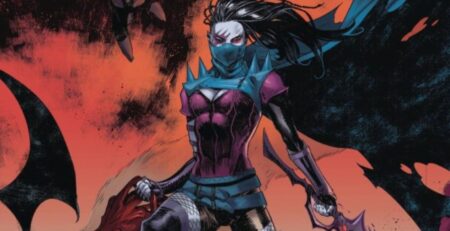
Nils: The Tree of Life is published by Magnetic Press, a subsidiary of Polarity, written by Jérôme Hamon with art by Antoine Carrion. Life is ceasing on Earth. The fields bear no food, while animals and humans alike cannot bring offspring into the world. Something is depriving the world of its life and soon there may not be anyone remaining to care. Attempting to stave off this tragedy is Ruben, a scientist who ventures into the wilderness with his son Nils.
Nils: The Tree of Life introduces readers to a harsh, cold world. While the seemingly inevitable doom is hanging overhead, this motif is fitting for the story. This cold world is also the best-executed aspect of the story. As the story unfolds you are introduced to an ever-expanding slice of this Earth. This version of Earth appears alien compared to the one we know and it would be easy for the strangeness to feel jarring. But this is avoided with skill as each piece of the world is revealed world at a natural pace, slotting in with the others in a harmonious manner. Unfortunately the same cannot be said for much of the story that takes place within this it.
The biggest struggle I had with Nils: The Tree of Life stems from its various fantasy elements. There is a lot of magic at work within these pages as Ruben and Nils get swept up in their adventure to save the planet. The only struggle with this is there is never any explanation whatsoever about what is happening. As the fantasy elements begin to make their presence known, the reader is required to simply accept what is happening and move on. While this isn’t always a bad thing, there are moments where my ability to simply accept the events transpiring was difficult. I oftentimes was left feeling like things were happening simply because the story needed them to, which is never a good thing.
While this lack of clarity hurts the magical side of the story the most it, unfortunately, isn’t confined to it as the characters in Nils: The Tree of Life also come across as lacking any clarifying motives or traits. For the most part, the characters are either good or bad, but that’s the bulk of what you get for them. Simple motivations are put forward but I never really felt like I got to know any of these individuals. Who they are as people never really comes to the forefront, leaving them feeling like little more than vehicles to propel the narrative. That core narrative, however, is the strongest part of the writing in Nils: The Tree of Life.
As the characters unravel the mystery of why life is failing, readers are given a grim warning of the price that greed and the lust for power can extract upon the world. Humanity being the cause of nature’s destruction is not a new concept but it is executed were here. Hamon takes things a step or two further than stories often go with his villains, gifting them a particularly despicable attitude toward their fellow people and the world.
Another place where Nils: The Tree of Life truly shines is its artwork. Carrion’s panels are wonderful to look at. His ability to blend the mythological and technological seamlessly together is marvelous. All aspects of this story are treated with the same care and craftsmanship. From the spirits, to the machines, and especially the characters, everything feels at home in its place within the panels. The emotions portrayed by the characters also help to overcome some of their shallowness. As the faces and body language helped pull me into the most critical moments of the story. So while Nils: The Tree of Life does suffer some setbacks I feel it is, in the end, a story well worth experiencing. Its gorgeous art breaths that little extra into the story that the writing sometimes lacks, allowing the reader to become immersed in its world.
Nils: The Tree of Life is available on January 29th in comic book stores everywhere.
Nils: The Tree of Life
TL;DR
So while Nils: The Tree of Life does suffer some setbacks I feel it is, in the end, a story well worth experiencing. Its gorgeous art breaths that little extra into the story that the writing sometimes lacks, allowing the reader to become immersed in its world.






